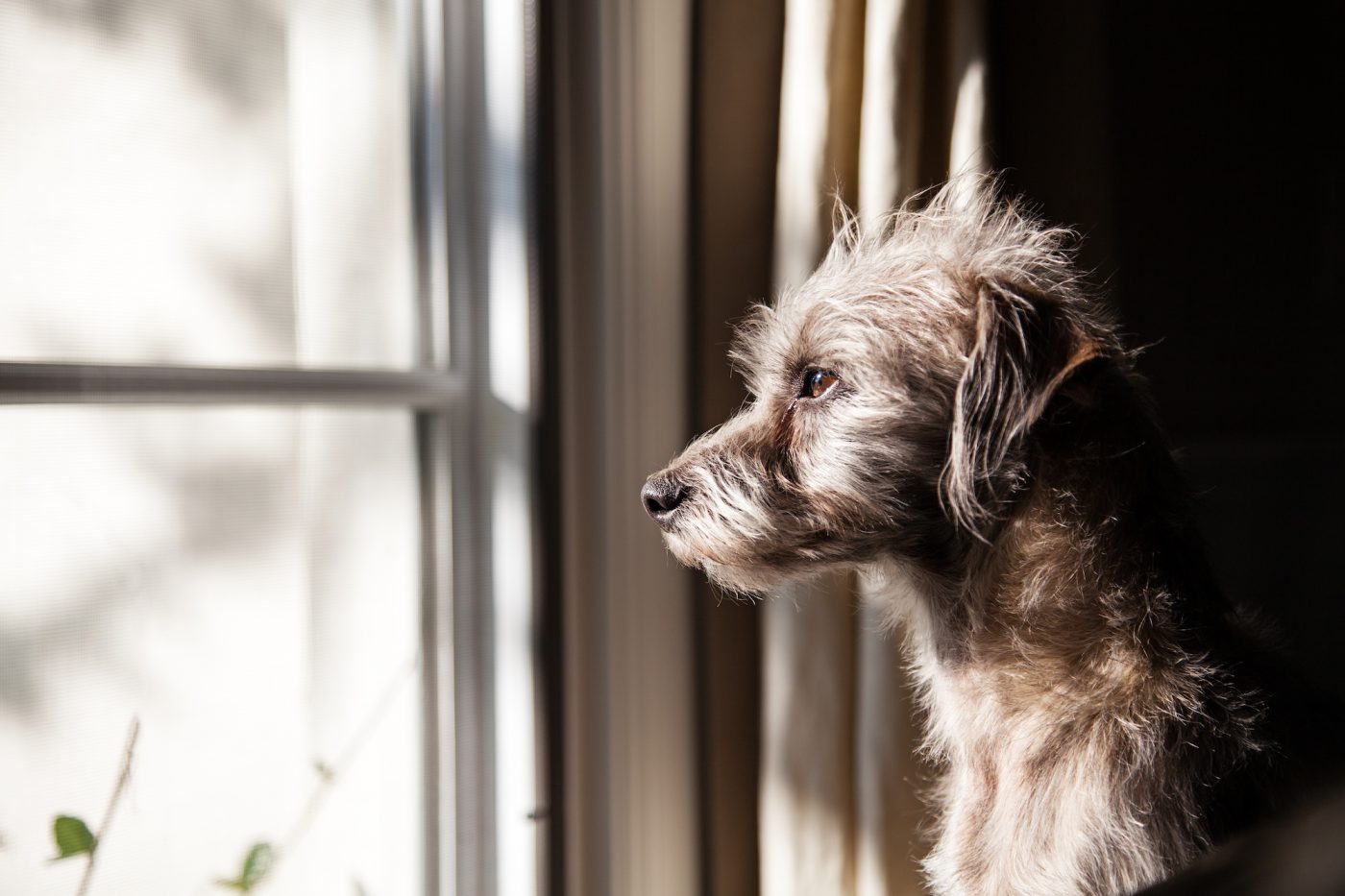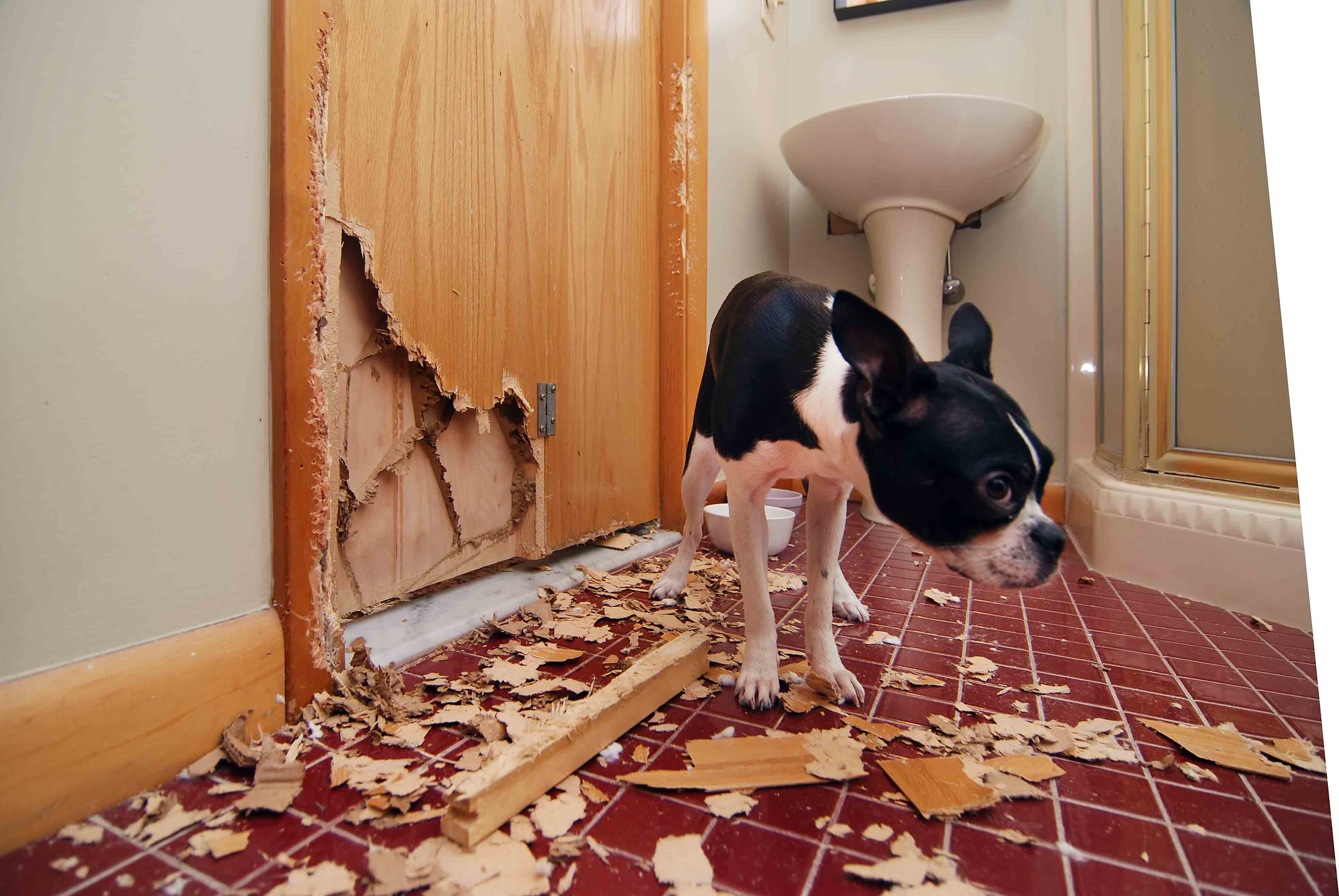Separation anxiety in dogs is a common behavioral issue that can cause significant distress to both the dog and its owner. Dogs with separation anxiety may bark excessively, whine, pace, or even become destructive when left alone. While there is no one-size-fits-all solution to separation anxiety, there are a number of effective techniques that can help to reduce the severity of symptoms and improve the dog’s quality of life.
In this blog post, we will discuss the causes and symptoms of separation anxiety in dogs, as well as provide a step-by-step training plan to help you stop your dog from barking when left alone. We will also provide information on medication and other resources that may be helpful in managing separation anxiety.
Managing Separation Anxiety
Behavioral Techniques
Desensitization and counter-conditioning are effective behavioral techniques to manage separation anxiety. Desensitization involves gradually exposing your dog to the triggers that cause anxiety, starting with short durations and gradually increasing them. Counter-conditioning pairs the triggers with positive experiences, such as treats or praise, to change your dog’s association with them.Positive
reinforcement plays a crucial role in both techniques. Reward your dog for calm behavior when left alone, and avoid punishing them for anxiety-related behaviors. This helps your dog understand that staying alone is not a negative experience.
- Gradual Exposure: Start by leaving your dog alone for short periods, such as 5 minutes, and gradually increase the duration as they become more comfortable.
- Create a Safe Space: Provide your dog with a comfortable and safe space, such as a crate or designated area, where they can retreat when feeling anxious.
- Provide Mental Stimulation: Exercise your dog before leaving them alone and provide them with interactive toys or puzzle feeders to keep them mentally engaged.
- Use Calming Aids: Consider using pheromone diffusers, calming sprays, or music therapy to create a relaxing environment for your dog.
- Seek Professional Help: If your dog’s separation anxiety is severe or persistent, consult a veterinarian or certified animal behaviorist for professional guidance.
Environmental Modifications for Separation Anxiety
Creating a comfortable and stress-free environment for your dog when left alone can significantly reduce separation anxiety. Environmental modifications include altering the physical surroundings and introducing calming aids to alleviate stress and create a sense of security.
Calming Aids
Several calming aids can help soothe anxious dogs. Pheromone diffusers release synthetic versions of the calming pheromones produced by nursing mothers, providing a sense of comfort and security. Calming music, specifically designed for dogs, can also create a relaxing atmosphere and reduce anxiety levels.
Medication for Separation Anxiety

Medication may be considered for severe cases of separation anxiety that do not respond to other treatments. The types of medications available include:
- Antidepressants: These medications, such as fluoxetine (Prozac) and sertraline (Zoloft), can help to reduce anxiety and improve mood.
- Benzodiazepines: These medications, such as alprazolam (Xanax) and lorazepam (Ativan), can help to reduce anxiety and promote relaxation.
It is important to note that medication should only be used under the supervision of a veterinarian, as there are potential side effects associated with these medications. These side effects can include drowsiness, lethargy, and gastrointestinal upset.
Training to Prevent Dog Barking When Left Alone
Separation anxiety is a common problem in dogs, and it can lead to a variety of behavioral problems, including barking. If your dog barks excessively when left alone, there are a few things you can do to help train them to stay calm and quiet.
The key to training your dog to stop barking when left alone is to use positive reinforcement and consistency. Positive reinforcement means rewarding your dog for good behavior, while consistency means always following through with your training commands.
Step-by-Step Training Plan
- Start by leaving your dog alone for short periods of time, such as 5 or 10 minutes. Gradually increase the length of time you leave them alone as they become more comfortable.
- While you’re gone, give your dog something to keep them occupied, such as a toy or a chew bone.
- When you come home, don’t make a big deal about it. Just calmly greet your dog and give them a treat.
- If your dog barks when you leave, don’t punish them. Instead, calmly tell them “no” and then leave the room. Wait a few minutes and then try again.
- Be patient and consistent with your training. It may take some time for your dog to learn to stay calm when left alone, but with patience and consistency, you can help them overcome their separation anxiety.
Common Mistakes to Avoid
When addressing separation anxiety in dogs, it’s crucial to avoid certain common mistakes that can worsen the situation or hinder progress.
One major mistake is punishing or isolating the dog when they exhibit anxious behaviors. Punishment, such as scolding or physical force, only serves to increase fear and anxiety, further damaging the bond between the dog and their owner.
Isolation
Similarly, isolating the dog in a crate or separate room as a form of punishment or to prevent destructive behavior is ineffective and harmful. Isolation can exacerbate anxiety by depriving the dog of companionship and comfort, potentially leading to even more severe separation anxiety.
Resources for Support

Overcoming separation anxiety can be a challenging journey, but you’re not alone. There are numerous resources available to provide support and guidance.
Veterinary behaviorists are veterinarians who have specialized training in animal behavior. They can assess your dog’s specific needs, develop a treatment plan, and provide ongoing support.
Support Groups
Connecting with other dog owners who are experiencing similar challenges can be invaluable. Support groups provide a platform for sharing experiences, tips, and emotional support.
Closure
If you are concerned that your dog may be suffering from separation anxiety, it is important to seek professional help. A veterinarian or certified animal behaviorist can help you to diagnose the problem and develop a treatment plan that is tailored to your dog’s individual needs.
With patience and consistency, you can help your dog to overcome separation anxiety and enjoy a happy and healthy life.
FAQ Corner
What are the signs and symptoms of separation anxiety in dogs?
Dogs with separation anxiety may exhibit a variety of signs and symptoms, including:
- Barking excessively
- Whining
- Pacing
- Destructive behavior
- Eliminating in the house
- Panting
- Drooling
- Shaking
- Hiding
What are the causes of separation anxiety in dogs?
There are a number of factors that can contribute to separation anxiety in dogs, including:
- Changes in routine
- Moving to a new home
- The loss of a loved one
- Boredom
- Lack of exercise
- Genetics
How can I stop my dog from barking when left alone?
There are a number of things you can do to help stop your dog from barking when left alone, including:




